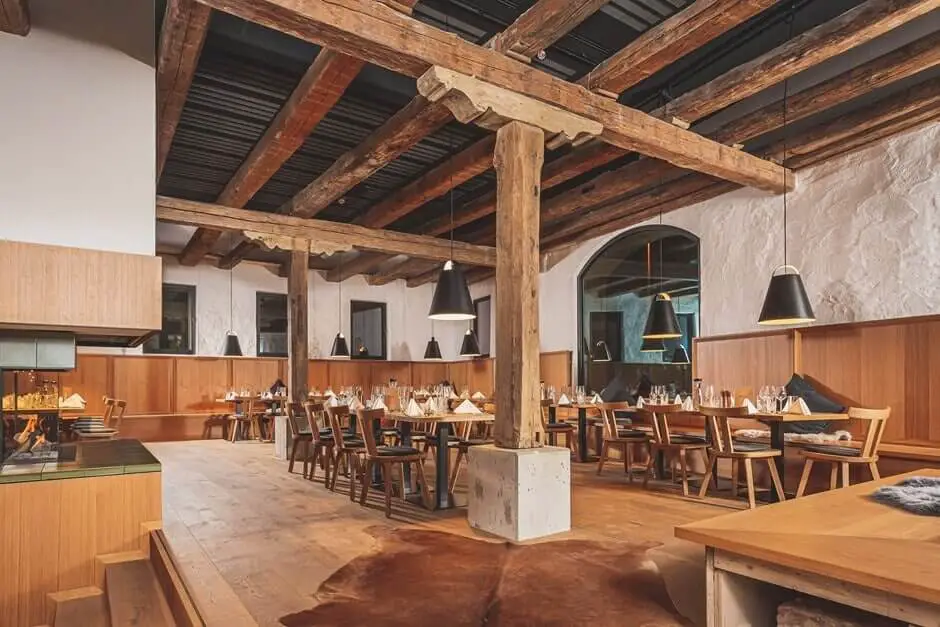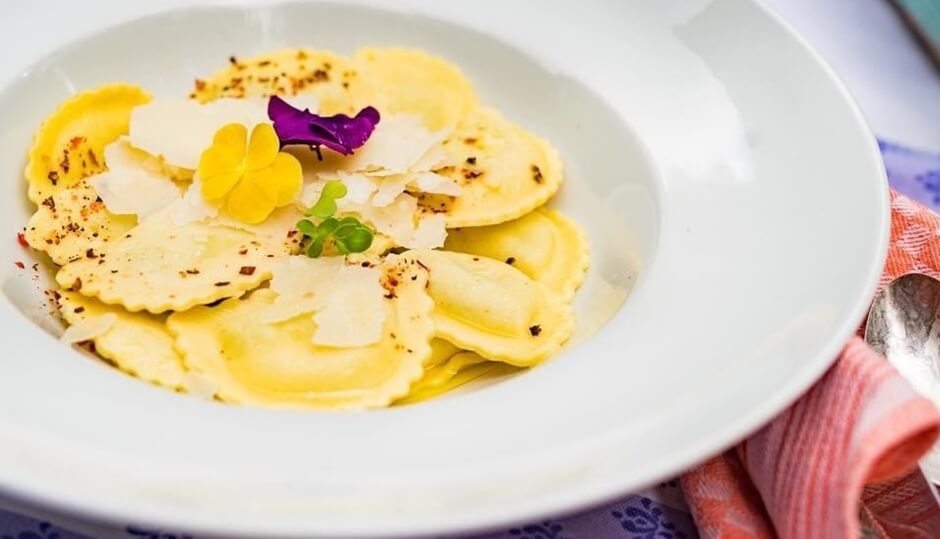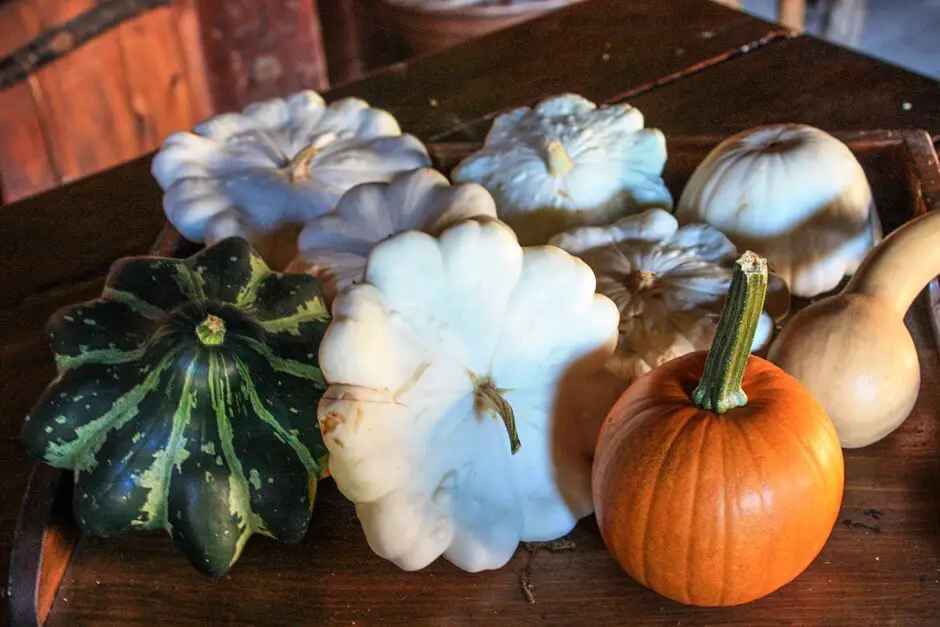Advertisement - Tyrolean Schlutzkrapfen recipe
Bring the world into your kitchen
You cannot travel at the moment? What do you think of bringing the taste of your travel destinations into the kitchen at home? This fits ours Journey through the culinary world. We therefore have hotels based on recipes for our Travel Blog for Connoisseurs asked, which you can cook yourself with few ingredients. With this Schlutzkrapfen recipe from Tyrol you can prepare this specialty yourself. The old post office in Zusmarshausen also serves Schlutzkrapfen in the restaurant of the house. These go very well with the concept of the chef. Marc Schumacher specializes in delicacies Bavaria and the Alpine countries. Let yourself be invited and surprise your loved ones with this specialty Tyrol.

Schlutzkrapfen recipe from Tyrol
Schlutzkrapfen are a specialty that comes from Tyrol. They are made from pasta dough. They are similar to ravioli as they are cooked in Italy. Other neighboring regions are also familiar with comparable pasta dishes. These include the Carinthian pasta or also the pasta bags as they are known in Swabian. The Schlutzkrapfen dough is made from rye and wheat flour. The fillings vary. The kitchen of the old post office suggests a filling of curd cheese and spinach.
Ingredients for Schlutzkrapfen
Dough
- 150 g of rye flour
- 100 g wheat flour
- 1 egg
- 50 - 60 ml lukewarm water
- 1 tablespoon of oil
- salt
filling
- 150 grams of cooked spinach (that's about 300 grams of fresh spinach)
- 50 grams of onion
- half a clove of garlic
- a tablespoon of butter
- 100 grams of curd
- a tablespoon of grated parmesan
- chives
- nutmeg
- pepper from the grinder
- salt
You also need
- Grated parmesan
- Brown butter
- Chives for garnish

Preparation of the Schlutzkrapfen
Mix the two types of flour, add salt and put them on a work surface. Make a depression in the middle. Mix the egg with lukewarm water and oil. You pour this mixture into the hollow in the flour. Then you knead the whole thing into a smooth dough.
Set the dough aside and leave it covered for about 30 minutes.
In the meantime, finely chop the spinach. Braise the onion and garlic in butter. Then you add the spinach. Season the whole thing with nutmeg, salt and pepper.
Now you roll out the dough thinly and make sure that it does not dry out. Use a glass or a cookie cutter to cut out round shapes about seven centimeters in diameter.
Use a small spoon to pour the filling into the middle of the dough sheets.
Then moisten the edge of the dough with a little water and fold the dough together in a crescent shape. Press the edges immediately.
Then you cook the Schlutzkrapfen in salted water for about three to four minutes.
When they're done, sprinkle them with parmesan and serve them with brown butter and chives.
Enjoy the Schlutzkrapfen!

Try them out in the old post office
The Alte Posthalterei looks back on hospitality that goes back to 1648. Throughout her history she saw some guests who enjoyed staying in this house. The Alte Posthalterei was located on the stagecoach connection between Vienna and Paris. This route was particularly important in the 18th and 19th centuries. Therefore, guests in the post office who had power and influence also stayed at that time. Marie-Antoinette's stay is recorded in the inn's annals. The Archduchess made a stop here on her journey in 1770 France. There she married the King of France. Decades later, Napoleon rested here for three days. Today the A8 runs very close from Munich to Stuttgart.
Old post office
Augsburger Str. 2
86441 Zusmarshausen
info@posthalterei.com
Tel. + 49 (0) 8291 85 82 20

By the way:
- Baking supplies store
- Do you already know ours Plum cake from a tin with sprinkles?
- Or the Plum cake with almonds?
- Recipes from all over the world
- Making butter yourself in the butter barrel - That's how it works
- Macarons recipes for connoisseurs
- Stams Tirol and its sights
- Hygge living in autumn and winter
- Ottawa Winterlude
- Ottawa Winterlude hotels
Source: Recipe provided by the Alte Posthalterei. We thank you very much.
Text: © Copyright Monika Fuchs, TravelWorldOnline
Photos: © Copyright Alte Posthalterei and Benreis, Wikimedia



